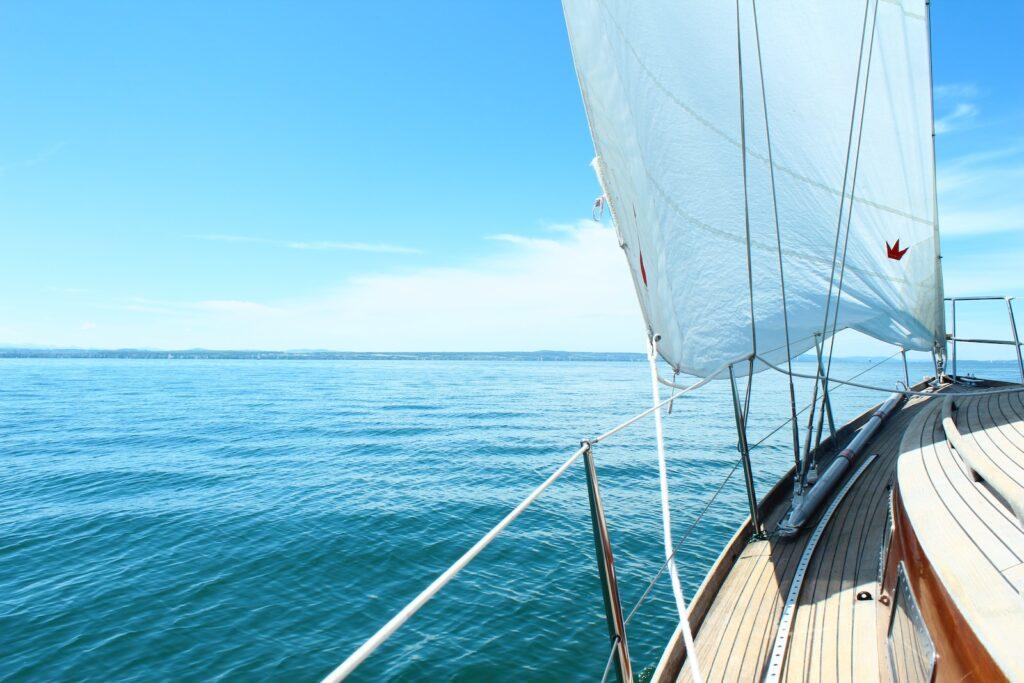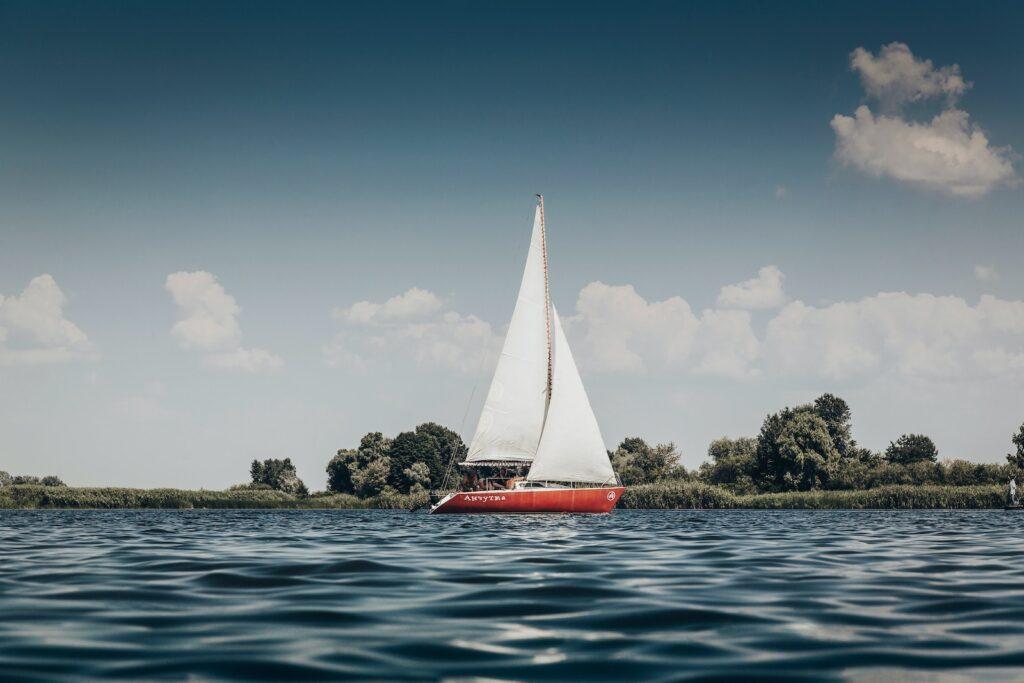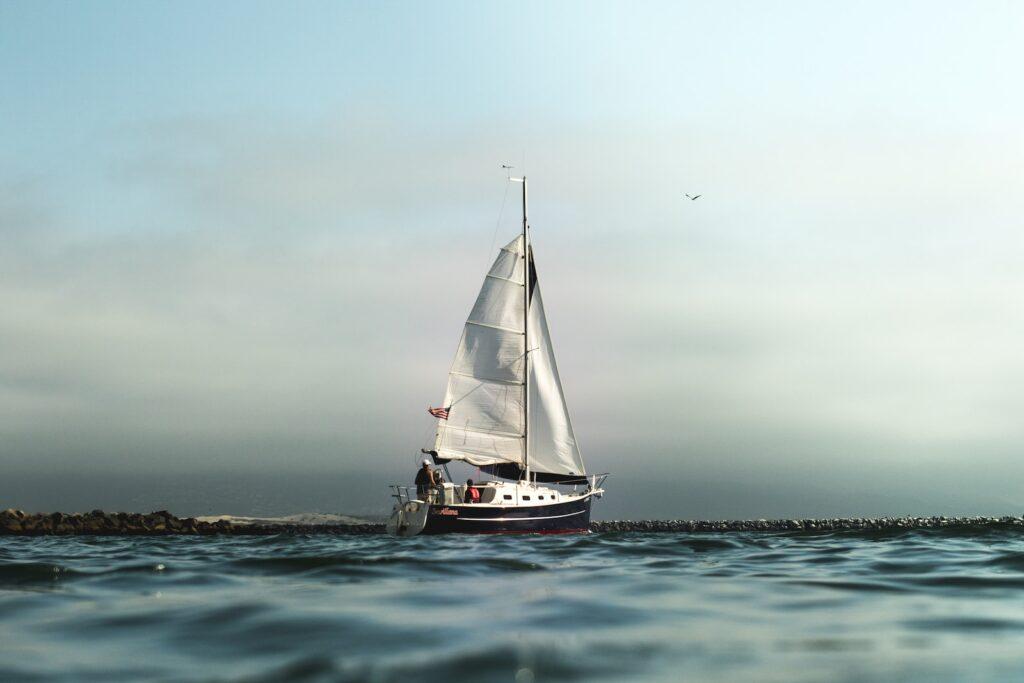What Is a Control Marker
Boating can be fun and exciting activity, but it can also be dangerous if you are unfamiliar with the rules and regulations of the water. One important safety measure for boaters is the use of control markers. Control markers are used to mark the boundries of the waterway, indicate the direction of travel, and provide other important information to boaters. In this article, we will discuss what a control maker is, why they are important, and how they should used.
Key Takeaways:
- Control markers serve as points of reference to regulate or monitor specific conditions, variables, or parameters within a system or experiment. They help ensure that desired outcomes are achieved and maintained.
- They often manifest as visual cues such as lights, gauges, dials, or indicators that provide real-time feedback or information about the status or functioning of a process or system.
- Control markers are crucial for maintaining precision and accuracy in various scientific, engineering, and technological applications. They help in fine-tuning operations to achieve optimal results.
- They often play a role in feedback loops by providing information that allows for adjustments or corrections to be made in response to changes or deviations from desired conditions.
- Control markers find applications in diverse fields, including but not limited to engineering (like in control systems for machinery), chemistry (such as pH indicators), biology (like genetic markers), and even in everyday life (like thermostat indicators for temperature control).
What Is a Control Marker?
Control markers are typically white with an orange geometric shape (circle, square or diamond) and a black symbol. The type of restriction is indicated by the symbol within the geometric shape. For example, a circle means controlled area such as speed limit, no wake, or no skiing. A diamond with a cross means a place where boats are not allowed.
These markers are important for the safe, orderly, and controlled movement of vessels in waterways. They help to prevent accidents, protect certain areas from the impact of boat traffic, and ensure that all boaters can enjoy the water safely. Compliance with the instructions indicated by control markers is not only safe and courteous, but in many jurisdictions, it’s also the law.
So, when boating, it’s crucial to understand what different control markers mean and to respect the restrictions they communicate. If you’re unsure of what a particular control marker means, it’s a good idea to consult a reference such as a boating handbook or a nautical chart.

Types of Control Markers
Control markers in boating can be divided into two main categories: navigational aids and regulatory markers. Navigational aids are markers used to help boaters navigate the waterways and include buoys, beacons, and lights.
- Information and Regulatory Markers: These are white signs with orange markings and black lettering. They display messages such as directions, distances, and general information.
- Channel Markers: These markers indicate where it is safe for your boat to travel. They can be green (can-style) or red (nun-style), and you navigate between them.
- Mooring Buoys: These are white with a blue band and are the only buoys to which you can legally tie your boat.
- Danger Markers: These markers are white with orange diamond shapes on two opposite sides and orange horizontal bands on the top and bottom. They indicate danger such as rocks, shoals, construction, dams, or stumps.
- Restricted Operation Zone Markers: These markers are used to indicate areas where boating is restricted. They can be white with orange circles on two sides and two orange horizontal bands.
- Controlled Area Markers: These markers are used to designate areas where speed limits are set or where restrictions on operation are imposed.
- Exclusion Area Markers: These markers indicate areas off-limits to all boats. These could be swimming areas, dams, and spillways.
- Diving Buoys: These are flown to indicate a diver in the water. Boats should stay 100 feet away from the diving flag in rivers, channels, and inlets, and 200 feet away in all other waters.
Regulatory markers indicate areas where boaters must observe local laws, such as speed limits and no-wake zones. These markers are typically buoys and signs.
Channel Markers
Channel markers are used to indicate the boundaries of a waterway and the direction of travel. They are usually red, with even-numbered markers indicating the right side of the channel and odd-numbered markers indicating the left side.
Safety Markers
Safety markers are used to mark dangerous areas such as shallow water, rocks, or other hazards. They are usually white or yellow, and have a red stripe or other identifying marking.
Navigation markers are used to indicate navigation routes, points of interest, and other important information. They are usually green or yellow, and have a number or letter on them that indicates their purpose.
Why Are Control Markers Important?

Control markers are an important part of boating safety. They help boaters stay within the boundaries of the waterway, identify hazards, and provide other important information. They help to ensure the safety of other vessels by helping them stay out of the way of oncoming traffic.
Control markers are important in boating because they help boaters navigate waterways safely and avoid obstacles, such as rocks, shallow areas, and other boats. Control markers provide a visual reference point that indicates the safe path to follow. They are also used to mark the boundaries of no-wake zones, channels, and other areas of the waterway. Control markers can help boaters determine their location and ensure they are on course.
How to Use Control Markers
To use control markers in boating, first locate the control markers near your destination. These will typically be buoys, beacons, or buoys with lights. It is important to be aware of the color and shape of the marker as this will tell you which direction to take. Once you’ve located the marker, use it as a guide to steer your vessel in the correct direction. Make sure to keep a safe distance from the marker to avoid any collisions or damage to the marker. Make sure to follow the navigation rules of the waterways, such as staying to the right of the marker.
When navigating a channel, you should stay within the boundaries indicated by the control markers. Even-numbered markers should be kept to the right side of the boat and odd-numbered markers should be kept to the left side. It is important to stay within the boundaries of the channel in order to avoid hazards, other vessels, and other obstacles.
Reading Markers
It is important to understand how to read the markings on control markers in order to accurately interpret the information they provide. Different colors and numbers indicate different purposes, and it is important to know what each marker means in order to stay safe on the water.
Following Directions
When navigating, it is important to follow the directions indicated by the control markers. This includes staying within the boundaries of the channel, avoiding hazards, and following the direction of travel. Following the directions of the control markers will help ensure your safety on the water.
Safety Tips for Boaters

In addition to understanding how to use control markers, there are other important safety tips that boaters should follow when out on the water.
Check Weather Conditions
Before heading out on the water, it is important to check the weather conditions to ensure that it is safe to go boating. High winds and rough seas can be dangerous, so it is important to check the forecast before heading out.
Wear a Life Jacket
It is important to wear a life jacket whenever you are on the water. Life jackets provide an extra layer of protection in case of an emergency. They should be worn by all boaters, regardless of skill level or experience.
Check Equipment
Before heading out on the water, it is important to check all of your equipment to make sure it is in good condition. This includes checking the engine, fuel, and other safety equipment. Checking your equipment before heading out can help to prevent accidents and ensure that you are prepared in case of an emergency.
When out on the water, it is important to follow all of the navigation rules and regulations. This includes staying within the boundaries of the waterway, avoiding hazards, and following the direction of travel. Following the navigation rules can help to ensure your safety on the water.
Be Aware of Other Vessels
When out on the water, it is important to be aware of other vessels and obey the navigation rules. This includes keeping a safe distance between other vessels and staying within the boundaries of the waterway. It is also important to be aware of other vessels’ movements and be prepared to take evasive action if necessary.
Use Lights and Signals
When out on the water, it is important to use the proper lights and signals to indicate your presence and intentions. Depending on the type of vessel you are using, you may need to use different types of lights and signals. It is important to understand the lights and signals of other vessels in order to stay safe on the water. Check marine led light bars if its something that You are looking for.
Communicate With Other Vessels
When out on the water, it is important to communicate with other vessels in order to ensure everyone’s safety. This includes signaling your intentions, such as when you are turning or stopping, and communicating with other vessels when in close proximity.
Be Aware of Your Surroundings
When out on the water, it is important to be aware of your surroundings and be prepared for unexpected changes in the environment. This includes being aware of the weather, currents, and other hazards that may be present.
Be Prepared for Emergencies

When out on the water, it is important to be prepared for emergencies. This includes having a first aid kit, a fire extinguisher, and other safety equipment on board. Additionally, it is important to be familiar with the safety procedures and know how to respond in case of an emergency.
Know How to Call for Help
In case of an emergency, it is important to know how to call for help. Depending on where you are, this could include using a VHF radio, cell phone, or other means of communication. It is important to know what type of communication is available in your area and how to use it in case of an emergency.
Understand Emergency Signals
When out on the water, it is important to understand emergency signals and know how to respond to them. This includes understanding distress signals and other signals that indicate an emergency. It is important to be aware of the emergency signals and know how to respond to them in order to stay safe on the water.
Follow Emergency Procedures
In case of an emergency, it is important to follow the proper emergency procedures. This includes following the directions of the Coast Guard or other emergency personnel, staying in the area until help arrives, and providing any necessary information. Following the proper emergency procedures can help to ensure your safety in case of an emergency.
FAQs
What is a control marker in boating?
A control marker in boating is a buoy or a sign that is used to guide the navigation of vessels. It provides information about the nature of the waterway, the presence of hazards, or regulations that apply to the area.
How many types of control markers are there?
There are several types of control markers including information and regulatory markers, channel markers, mooring buoys, danger markers, restricted operation zone markers, controlled area markers, exclusion area markers, and diving buoys.
How should a boater respond to a control marker?
Boaters should respond to control markers by adjusting their route or behavior according to the information provided by the marker. This could include changing direction, adjusting speed, avoiding certain areas, or following specific rules indicated on the marker.
Conclusion
Control markers are an important part of boating safety. They are used to mark the boundaries of a waterway, indicate the direction of travel, and provide other important information to boaters. It is important to understand how to read and use control markers in order to stay safe on the water. In addition, there are other safety tips that should be followed when out on the water, such as checking the weather conditions, wearing a life jacket, checking equipment, and following navigation rules. By following these safety tips and understanding how to use control markers, you can ensure a safe and enjoyable boating experience.
